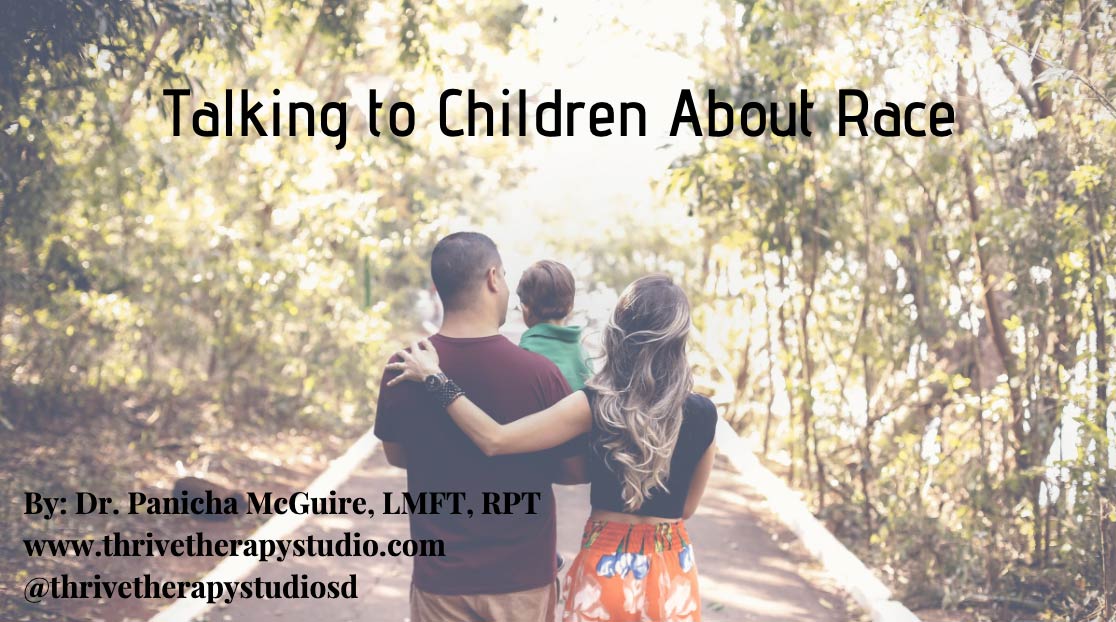Talking about race to children can be a touchy subject. Some parents might not even have an option to talk about race because their children would have to learn about it by what they confront in their everyday life. Teaching your children about race early on is actually beneficial given that children as young as 6 months are able to notice racial differences! In fact, there have been research on newborns and infants showing racial biases towards members of their own race.
Talking about race to a young child could be as simple as pointing out the physical differences they notice. For example, a 3-year-old might ask questions about skin color or hair texture. The hard part though… is the discussion about racism. The recent events might prompt children to ask questions. While some might wonder if it could be better to turn off the tv and shield their little young minds until they are old enough to understand, we have to remember that children notice and receive many messages around them no matter how much we try to control it.
And importantly, if we are not discussing these kinds of topics, they will make their own assumptions and come up with their own ideas about why that is or how we feel. Even though it is challenging or might be uncomfortable, it is important to lean into these crucial conversations and explore together the questions they have and what we can all do to be better humans in the world.
So where do we start? In order to feel comfortable talking about race to your children, you have to first be comfortable with talking about it yourself. It’s better to be proactive than to wait for children to ask you questions. While you have these discussions with other adults in your life, notice what comes up for you. What ideas or assumptions do you hold? Where did they come from? When you become aware of your own biases, it is more likely that you’ll be able to work on it and overcome it so you don’t pass it on unknowingly. And remember that this part is never complete. Gaining awareness of our preconceived ideas about racial groups and challenging the way we think about race is an ongoing process.
When you speak to your children about race or racism, there are key points to remember. Let them ask questions. We all know children may not necessarily ask questions in the most polite or respectful way. But giving them a safe space to do so with YOU would be a good opportunity to start a discussion. Even when the questions are uncomfortable for you, embrace the question and encourage your child to keep asking them. When children are shamed about asking questions, they learn quickly to stop doing it.
It’s also okay to be emotional. Because they are receiving information about themselves and about others, this can spark a lot of feelings. The most important thing about the emotions that may come up for you or your child is to normalize them. Tell your child that it is understandable to feel sad or angry about the injustice in the world and that you do too. And remember that this is a marathon. You don’t need to have all the answers and be able to have a discussion with them in the moment.
For younger children, you can start by explaining what racial differences mean. They might say something like “his skin looks dirty…”. While your instinct might be to shush your child as you want to teach them not to be rude or disrespectful, you are unintentionally teaching them that talking about race is not okay. You can say, “His skin is brown, but it isn’t dirty. His skin color is just different from yours because we all have different levels of something called melanin. People come in all colors, shapes, and sizes”. Asking questions such as “what makes you say that?” or “why do you think so?” can help you understand where these ideas are coming from.
And even though talking about physical differences (hair, skin color, etc) may seem like the most obvious, don’t forget to mention other factors that are important to diversity such as cultural practices or languages. This will help shift the attention away from looks and towards other qualities. I remember in Kindergarten, my teacher read a book about the different types of homes people lived in around the world and as an Asian American immigrant who had just moved to the U.S., it was so nice to see my teacher focus on something other than what I already knew was different about me… my skin tone or my eyes.
Older children might have more questions as they start to observe the world around them. This is an opportunity to have discussion that involve more critical thinking. You can start talking about stereotypes and biases, and what they mean. Not only can you talk about how these statements are hurtful, you can also talk about inequality, inclusion, and exclusion. Why is generalizing a whole group of people bad? Does someone benefit from it? What can we do to help? How would you feel if someone was thinking or talking that way about you?
Lastly, I encourage everyone to integrate more diversity into their lives. My favorite Disney princess is Mulan, and it always will be. I remember watching Mulan for the first time on VHS and I happily pointed out to my parents that there’s someone who looks just like me on TV! And sadly, out of all my toys, the Mulan doll was the only one I had that looked like me. Take this opportunity to notice what your child is exposed to. Who is portrayed in the media they consume? What do their toys look like? Do they go to a diverse school? Perhaps it’s time to intentionally include things that feature people from different races and ethnicities.
Remember what I said about this being a marathon? It’s okay to make a mistake and to regret the way you answered a question. You are a role model for your child. Acknowledge that adults can make mistakes too and that you’re still learning to be better. This is a challenging topic to discuss, and like most uncomfortable topics, it is one of the most important conversations we can have.
If you are interested in resources about how to further these conversations and help your child be an Anti-Racist, please check out our new resource page all about this topic.
As always, we at Thrive are here for you and your families and hope to help you further your ability to have difficult, often uncomfortable, but important conversations in your families and address the topics that are coming up in our world.
Reach out to start
your healing journey


